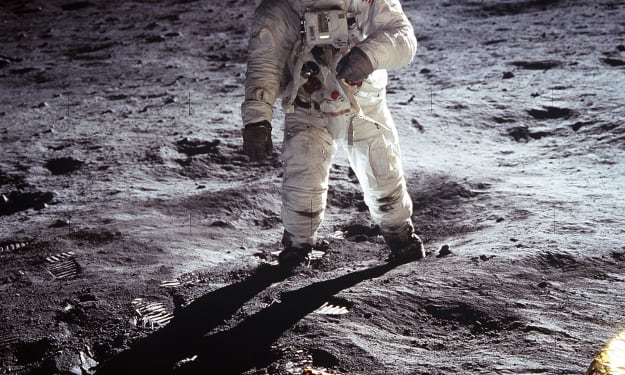The Real Life Story Of Oppenheimer
J. Robert Oppenheimer: A Tale of Ambition, Responsibility, and the Price of Progress

J. Robert Oppenheimer, often dubbed the father of the atomic bomb, shares a striking parallel with Prometheus, the ancient Greek Titan. This comparison isn't drawn from a shared god-like intellect but rather a tale of gifts bestowed, consequences faced, and deep-seated remorse. Oppenheimer's life was a journey marked by towering achievements and profound dilemmas. His early fascination with the cosmos's mysteries set the stage for his pivotal role in one of the 20th century's most significant scientific advancements. Oppenheimer's life story is a testament to the power and peril of knowledge. As we unravel his narrative, we'll draw the lines connecting this brilliant physicist and Prometheus, revealing a tale of ambition, responsibility, and the price of progress.
Now, let's turn the pages of history and walk through the timeline of Oppenheimer's life, a journey that mirrors the myth of Prometheus in its highs and lows.
In the bustling heart of New York City on April 22, 1904, a child named J. Robert Oppenheimer was born into a world on the cusp of a scientific revolution. His mother, Ella, a painter, and his father, Julius, a successful textile Alan Porter, were the first audience to his budding intellectual brilliance. His early education at Manhattan's Ethical Culture School was not just a journey through textbooks but a voyage into the vast cosmos of knowledge. The city around him, pulsating with a rhythm of progress and innovation, was a grand stage set for the young prodigy.
Oppenheimer's fascination with the mysteries of the universe began to take root in this vibrant backdrop. These early years were the first notes in the symphony of his life, a melody that would eventually resonate through the halls of scientific history. His first hobby, gathering rocks and minerals, was a precursor to a lifelong trip into the heart of science. This journey eventually led him to the hallowed halls of Harvard University, where a young Oppenheimer found himself drawn to the enigmatic world of chemistry. Yet, the allure of theoretical physics truly captured his intellect.
His pursuit of knowledge led him across the Atlantic to the University of Göttingen in Germany, a beacon of scientific innovation. Under the gray skies of Göttingen, Oppenheimer delved into the mysteries of quantum physics, his mind dancing with particles and probabilities. The university's grand lecture halls echoed the theories of the greatest minds in physics, and Oppenheimer was a keen listener, absorbing every word. His time in Germany was not just a period of academic achievement but a journey of intellectual exploration. As he navigated the complex landscape of quantum physics, Oppenheimer laid the foundation for his future role in one of the most significant scientific advancements of the 20th century.
Oppenheimer's burning passion for physics led him to the University of California, Berkeley, where he began his academic career. There, amidst the grandeur of the university's neoclassic architecture, Oppenheimer's brilliance shone brightly. His lectures were a symphony of ideas, resonating with the theories of quantum mechanics and the mysteries of the cosmos. His contributions to theoretical physics were as profound as they were pioneering. He delved into the heart of atoms, unraveled the secrets of cosmic rays, and explored the enigmatic world of quantum field theory. His work was not just about understanding the universe but pushing the boundaries of what was possible in physics.
Amidst the whirlwind of scientific discovery and political intrigue, Oppenheimer found solace in the comforts of family life. He married Catherine Pointing, a radical Berkeley student, in 1940. Together, they had two children, Peter and Catherine. His family life offered a counterpoint to his intense professional pursuits, grounding him amidst the tumultuous events of his career. The love and support of his family were his refuge during the trials and tribulations that marked his later years.
The Manhattan Project beckoned Oppenheimer in 1942. He was appointed the scientific director, a role that would thrust him into the epicenter of a scientific endeavor of unprecedented scale and consequence. Oppenheimer led a team of the brightest minds of the era in the secluded landscape of Los Alamos, New Mexico. Their mission was as formidable as it was secretive: to harness the destructive power of the atom. The stakes were high, and the world's weight rested on their shoulders. Their relentless efforts culminated on a fateful day in July 1945. The New Mexico desert bore witness to the first successful test of the atomic bomb, a spectacle of terrifying beauty that marked a turning point in human history. As the mushroom cloud unfurled in the sky, Oppenheimer's life, too, was irrevocably altered.
About the Creator
Enjoyed the story? Support the Creator.
Subscribe for free to receive all their stories in your feed. You could also pledge your support or give them a one-off tip, letting them know you appreciate their work.






Comments
There are no comments for this story
Be the first to respond and start the conversation.